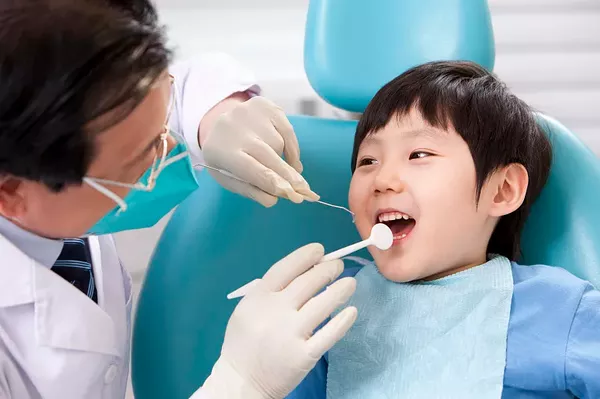Gingivitis is a common dental condition that affects millions of people worldwide. It is characterized by inflammation of the gums (gingiva) and is often the initial stage of gum disease. While gingivitis is a prevalent issue, one of the most common questions that people have is whether it is a permanent condition or if it can be treated and reversed. In this comprehensive article, we will explore what gingivitis is, its causes, symptoms, and most importantly, whether it is permanent or reversible through effective oral care and dental treatments.
Understanding Gingivitis
Gingivitis is the inflammation of the gingiva, which are the soft tissues that surround and support the teeth. It is typically caused by the accumulation of plaque—a sticky film of bacteria—on the teeth and gums. When plaque builds up and is not adequately removed through regular brushing and flossing, it can lead to gingivitis.
Causes of Gingivitis
Several factors contribute to the development of gingivitis, including:
Poor Oral Hygiene: Inadequate brushing and flossing allow plaque to accumulate on teeth and gums, leading to inflammation.
Smoking and Tobacco Use: Tobacco products can increase the risk of gum disease, including gingivitis.
Certain Medications: Some medications may affect gum health and increase susceptibility to gingivitis.
Medical Conditions: Health issues such as diabetes, certain viral and fungal infections, and immune system disorders can impact gum health.
Hormonal Changes: Hormonal fluctuations during pregnancy, menstruation, and menopause can make gums more sensitive and prone to gingivitis.
Poor Nutrition: A diet lacking in essential nutrients can weaken the immune system and affect gum health.
Symptoms of Gingivitis
Gingivitis often presents with mild to moderate symptoms that can be subtle at first but may become more pronounced if left untreated. Common symptoms include:
Redness and Swelling: Inflamed gums appear red and may be swollen or puffy.
Bleeding Gums: Gums that bleed, especially when brushing or flossing, are a hallmark sign of gingivitis.
Bad Breath (Halitosis): Persistent bad breath can result from the presence of bacteria in the mouth.
Gum Sensitivity: Gums may feel tender or sensitive to the touch.
Receding Gums: In some cases, gums may start to pull away from the teeth, causing them to appear longer.
Pockets Between Teeth and Gums: The formation of pockets where gums pull away from teeth is a more advanced sign of gum disease.
Is Gingivitis Permanent?
The good news is that gingivitis is not a permanent condition. In fact, it is considered a reversible form of gum disease. With the right approach to oral care and appropriate dental treatments, gingivitis can be treated, and the gums can return to a healthy state.
Reversing Gingivitis
Reversing gingivitis involves a combination of proper oral hygiene practices and, in some cases, professional dental treatment. Here’s how gingivitis can be reversed:
Effective Oral Hygiene: The cornerstone of gingivitis reversal is effective oral hygiene. This includes brushing your teeth at least twice a day with a fluoride toothpaste and a soft-bristle toothbrush. Be sure to brush along the gumline and all tooth surfaces. Additionally, daily flossing is crucial for removing plaque and debris between teeth.
Regular Dental Check-Ups: Dental check-ups and professional cleanings are essential for monitoring and treating gingivitis. Your dentist or dental hygienist can remove plaque and tartar that cannot be eliminated with regular brushing and flossing.
Antimicrobial Mouthwash: Your dentist may recommend an antimicrobial or antibacterial mouthwash to help reduce the bacteria in your mouth.
Dietary Changes: A balanced diet rich in vitamins and minerals can support gum health. Avoid excessive sugar and acidic foods that can contribute to plaque buildup.
Smoking Cessation: If you smoke, quitting is beneficial for both your oral and overall health. Smoking is a significant risk factor for gum disease.
The Importance of Timely Treatment
It’s crucial to address gingivitis promptly because if left untreated, it can progress to a more severe form of gum disease known as periodontitis. Periodontitis involves irreversible damage to the supporting structures of the teeth, including the bone, and can lead to tooth loss.
Conclusion
Gingivitis is a common and treatable condition characterized by inflammation of the gums. It is not a permanent condition and can be reversed through diligent oral hygiene practices, regular dental check-ups, and professional cleanings. If you suspect you have gingivitis or are experiencing symptoms such as bleeding gums or bad breath, it is essential to seek dental care promptly to prevent the condition from progressing to a more severe and irreversible form of gum disease. Remember that maintaining good oral health through daily oral care and routine dental visits is key to preventing and reversing gingivitis.
Related Topics:































